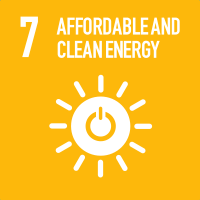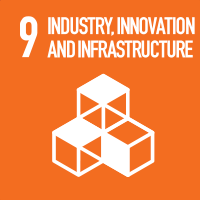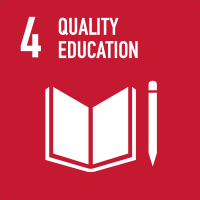Studying at the University of Verona
Here you can find information on the organisational aspects of the Programme, lecture timetables, learning activities and useful contact details for your time at the University, from enrolment to graduation.
Study Plan
This information is intended exclusively for students already enrolled in this course.If you are a new student interested in enrolling, you can find information about the course of study on the course page:
Laurea magistrale in Biotecnologie per le biorisorse e lo sviluppo ecosostenibile - Enrollment from 2025/2026The Study Plan includes all modules, teaching and learning activities that each student will need to undertake during their time at the University.
Please select your Study Plan based on your enrollment year.
1° Year
| Modules | Credits | TAF | SSD |
|---|
1 module between the following1 module among the following1 module among the following1 module among the following1 module between the following2° Year activated in the A.Y. 2023/2024
| Modules | Credits | TAF | SSD |
|---|
1 module between the following1 module among the following1 module between the following| Modules | Credits | TAF | SSD |
|---|
1 module between the following1 module among the following1 module among the following1 module among the following1 module between the following| Modules | Credits | TAF | SSD |
|---|
1 module between the following1 module among the following1 module between the following| Modules | Credits | TAF | SSD |
|---|
1 module among the followingLegend | Type of training activity (TTA)
TAF (Type of Educational Activity) All courses and activities are classified into different types of educational activities, indicated by a letter.
Nanomaterials for Biotechnology and Green Chemistry (2023/2024)
Teaching code
4S008287
Credits
6
Language
Italian
Scientific Disciplinary Sector (SSD)
CHIM/03 - GENERAL AND INORGANIC CHEMISTRY
Courses Single
Authorized with reserve
The teaching is organized as follows:
teoria
laboratorio
Learning objectives
The course aims to provide students with the theoretical and experimental tools for the preparation, study, development and application of nanomaterials in the fields of Biotechnology and Green Chemistry, for industrial, agro-food and biomedical applications. Properly activated and functionalized inorganic based nanomaterials with specific properties, such as diagnostics and sensorial, energy conversion and storage, transport of materials or substances, catalytic activity for production processes and transformation of resources, will be considered, in a perspective of sustainability development. The course also includes some laboratory experiences to provide practical manual skills as well as complementary competences to further refine the critical and analytical abilities for an optimal design, preparation, chemico-physical characterization and application of functional inorganic based nanomaterials in the fields of Biotechnology and Green Chemistry
Prerequisites and basic notions
Notions of Mathematics, Physics, General Chemistry and Organic Chemistry.
Program
THEORY
Nanomaterials: definition and peculiarities. Types of nanomaterials (organic, inorganic, organic-inorganic hybrids). 1D and 2D nanomaterials. Hierarchical nanostructures. Importance of the surface in nanomaterials. Phenomena influenced by the surface. Thermodynamic aspects of nanometric phases. Notes on the theory of bands. Semiconductor nanomaterials and Quantum Dots: electronic and spectroscopic properties. Fluoride-based nanomaterials activated with luminescent lanthanide ions. Luminescent Carbon Dots. Noble metal nanoparticles and their plasmonic properties. Oxide-based nanomaterials for photocatalysis. Magnetic nanoparticles. Organic-inorganic nanocomposites. Multifunctional nanostructures that external stimuli for diagnostics, drug delivery, and curative treatments in nanomedicine can activate. Synthesis of nanoparticles in solution with "green chemistry" methods (co-precipitation, sol-gel, solvothermal, inverse micelles, and ionic liquids). Microwave-assisted synthesis. Strategies to obtain different porosities, sizes, and morphologies (nanorods, core @ shell) of nanoparticles. Surface functionalization of inorganic nanoparticles. Chemical-physical analysis of nanostructures (structural, morphological, colloidal). Spectroscopic investigation in the optical field (UV, visible and infrared) on luminescent nanoparticles. Investigation of the vibrational properties of nanoparticles with infrared spectroscopy.
LABORATORY EXPERIENCES
1) Synthesis of metallic nanoparticles (Au, Ag) in solution and their spectroscopic characterization in the optical field (UV and visible). Investigation of colloidal properties.
2) magnetite (Fe3O4) nanoparticle preparation in solution with a microwave-assisted reaction. Study of colloidal properties.
3) Preparation of calcium fluoride and strontium fluoride CaF2 and SrF2 nanoparticles functionalized with luminescent lanthanide ions in an aqueous environment and their covering with a silica shell by sol-gel technique. Colloidal characterization of nanoparticles. Study of their visible emission properties following laser excitation in the near-infrared.
Bibliography
Didactic methods
The teaching will be carried out as lectures and laboratory experiences. The teaching methods will also include the application of the concepts developed with the lectures to illustrate solving real problems. Attendance of the teaching is strongly recommended.
Learning assessment procedures
The oral examination will include exposition of a bibliographic paper on a subject of the Course and questions on the topics of the Course, including the theoretical part, examples, exercises, and laboratory experiences. Particular attention will also be devoted to knowledge of the concepts, methods, experimental setups, and techniques used in laboratory experiences.
The oral examination will cover all the topics discussed in the course and the laboratory experiences for attending and nonattending students.
Written reports about the laboratory experiences are required. The reports must describe the principles, experimental methods used, and results obtained during the lab experiences. After the lab experiences are completed, they must be loaded to the Moodle platform.
Evaluation criteria
The evaluation criteria will be based on the ability to discursively organize knowledge, critical reasoning on the study, quality of exposure, competence in using specialized vocabulary, effectiveness, and linearity of exposure.
Criteria for the composition of the final grade
The final grade will result from assessing the learning of the theoretical part and from the learning of laboratory experiences.
Exam language
Italiano




